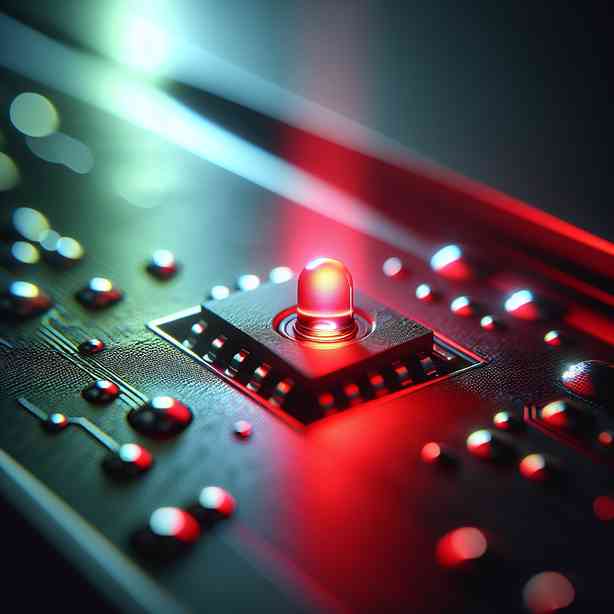
When the LED turns red, it often serves as a significant indicator across various devices and technologies. The red light typically signifies an alert, a warning, or an important notification that needs attention. Whether it’s in consumer electronics, automotive systems, or even household appliances, the meaning of a red LED can differ based on the context, but the general understanding remains the same: something requires your awareness.
In electronic devices, such as smartphones and computers, a red LED might indicate that the device is charging but has an insufficient power level left. It may also signify an error or a malfunction within the system. Understanding the specific meaning behind these indicators is crucial for users who wish to maintain their devices efficiently. For instance, if your smartphone LED is glowing red, it’s advisable to check the battery level, inspect the charging cable for any faults, or even perform a soft reset to troubleshoot any potential software issues.
In automotive applications, a red warning light on the dashboard should never be ignored. These lights can indicate critical issues, such as low oil pressure, engine overheating, or even a failure in the braking system. Each of these situations could lead to significant damage if not addressed immediately. Therefore, when the red light appears while driving, it’s essential to pull over safely and evaluate the situation. Ignoring these warnings can lead to more extensive repairs down the line and might pose safety risks for you and others on the road.
Household appliances also utilize red LED indicators to communicate with the user. For example, a red light on a washing machine might indicate that the door is not securely closed, or it could signal that the cycle has completed. In devices like smoke detectors, a red LED often signifies that the battery needs replacement or that the unit has detected smoke. Regularly monitoring these indicators and responding appropriately can not only prolong the lifespan of the appliance but also enhance overall safety within the home.
Technology continues to evolve, and with it, the meanings and purposes of LED lights have expanded. Smart home devices use colored indicators to convey a range of statuses. A red LED in a smart speaker could suggest that it is muted or not connected to the internet. Understanding these signals can enhance your user experience and improve your interaction with smart home technologies.
Furthermore, in computational networking, red LEDs on routers or switches may indicate a problem with the internet connection or an error in network activity. If users notice a red light, it’s imperative to troubleshoot the specific device or contact the internet service provider for assistance. Being proactive in recognizing these indicators can save users from long periods of inconvenience.
Similarly, in the wearables sector, such as fitness trackers or smartwatches, a red LED may illuminate when the device is struggling to maintain battery life or if there’s an issue with heart rate monitoring. Users should familiarize themselves with the manual and learn what each LED color represents, as this will enable them to make informed decisions regarding their health and device performance.
Each instance of a red LED turning on serves as a reminder to engage with the technology around us. By being attentive to these color-coded signals, users can respond quickly and effectively to various situations, whether they are related to personal safety, device maintenance, or technological efficiency.
Education is key in understanding what the red LED means across different platforms and devices. Many manufacturers provide user manuals that outline the significance of each indicator light, including when they turn red. It is highly advisable for users to take the time to familiarize themselves with these guidelines and instructions, as they contain invaluable information that can enhance device utilization and prolong equipment lifespan.
In terms of preventative measures, regularly checking your devices, whether it be your computer, car, or smart home devices, can help you stay ahead of potential issues. Implementing a routine check-up can be likened to a regular health check-up; just as people go to the doctor to ensure their health, devices require routine assessments to ensure optimal performance. This can mean ensuring that software is up to date, batteries are replaced timely, and components are functioning well.
With the understanding of various LED signals, including the alarming red hue, it becomes apparent that these lights serve as crucial communication tools. They often act as the first line of defense in notifying users of potential issues. Ignoring these signals can lead, at best, to inefficiency and, at worst, to safety hazards. Therefore, it is essential always to be aware and recognize what these signals convey.
In conclusion, when the LED turns red, it should serve as a prompt for you to take action. With vigilant observation and a proactive approach, you can mitigate issues before they escalate into more significant problems. The information provided sheds light on the wide array of contexts in which red LEDs are employed and stresses the importance of being attentive to these signals in day-to-day life. By doing so, you enhance not only your understanding of your devices but also your overall experience with technology, fostering a culture of responsibility and awareness in a tech-driven world.


